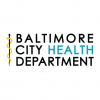Levels of Care for Baltimore City Hospitals Responding to the Opioid Epidemic
On April 30, 2018, Baltimore City leadership along with the leadership of Baltimore City's 11 acute-care hospitals, launched the Levels of Care for Baltimore City Hospitals Responding to the Opioid Epidemic initiative. This program provides a shared, evidence-based framework for hospitals to implement best practices in addressing the crisis. Through strong partnerships, almost all emergency departments in the city screen patients for substance use disorder, offer immediate treatment for those who screen positive, and employ peer recovery specialists to ensure continuity of care.
The Central Role of Hospitals
Opioid-related emergency department visits have been steadily increasing over the last few years, with a 20% increase from 2016 to 2023. (Data sourced from the Maryland Department of Health Overdose Data Portal, which was last updated in August 2024.) According to an article published in the Journal of Hospital Medicine, up to one-quarter of hospitalized patients have a substance use disorder (SUD).
Given these trends, opioid-related policies and protocols in hospitals continue to be crucial. Evidence supports various effective interventions:
Naloxone Distribution: Hospitals can prescribe or dispense naloxone, a medication that reverses opioid overdoses. One study found that nearly one-third of emergency patients who received naloxone used it to save someone during an overdose.
Treating Opioid Use Disorder: Initiating addiction treatment in the emergency department significantly boosts patient engagement in treatment after 30 days (78% vs. 45% when referred to community providers). Another study reported a 75% reduction in opioid use six months after inpatient-initiated addiction treatment.
Addiction Consult Services: These services effectively diagnose addiction, start treatment, and connect patients to ongoing care. Peer recovery specialists, who are in recovery themselves, also enhance treatment effectiveness.
Preventing new cases is as important as treating existing ones. Strategies to reduce opioid prescribing, such as following guidelines, have been effective. This approach is particularly relevant in Baltimore, where opioid use disorder is prevalent.
Building on Progress through Levels of Care
Baltimore City hospitals participating in the Levels of Care initiative are assessed based on various evidence-based criteria, such as a hospital's ability to provide treatment to patients who screen positive for substance use disorder, distribute naloxone, connect patients with peer support services or other forms of assistance, and ensure responsible opioid prescribing practices among physicians. By meeting these criteria, hospitals demonstrate their commitment to providing effective treatment, reducing harm, and supporting patients on their path to recovery. Hospitals can be classified as level 3, 2, or 1, with level 1 hospitals offering the most comprehensive response to the opioid crisis.
The initiative takes inspiration from a successful program in Rhode Island. In Rhode Island, all hospitals have successfully attained the level one designation established by the Rhode Island Department of Health.
Levels of Care for Baltimore City Hospitals Responding to the Opioid Epidemic
| Level of Care | Action |
|---|---|
A Level 3 hospital: |
|
A Level 2 hospital meets the criteria of Level 3 and: |
|
A Level 1 hospital meets the criteria of Levels 3 and 2 and: |
|
Current Levels of Care Designations
Baltimore City Hospitals | Levels of Care |
|---|---|
Johns Hopkins Bayview Medical Center | 1 |
MedStar Good Samaritan Hospital | 2 |
Ascension Saint Agnes Hospital | 3 |
